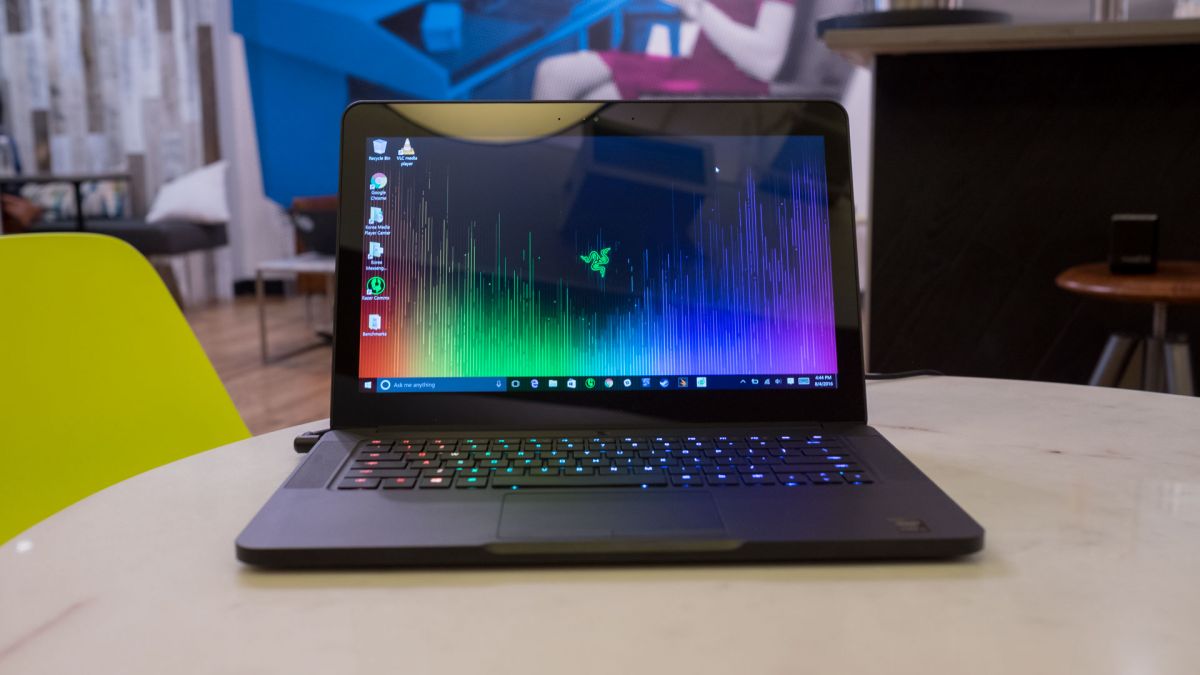
Introduction, design and features
Over the past few years, gaming laptops have focused on looks around the screen just as much as they have on looks within the screen. Naturally, Razer helped spur this trend with the Blade, its line of incredibly attractive gaming notebooks with price tags to match.
The peripheral maker’s latest iteration, however, stands put the laptop under a new – or, at least broader – light. While not much has changed visually about the new Blade, lots of change has gone on inside, like a Skylake processor, more video memory (VRAM) and Thunderbolt 3.
All the while, Razer managed to slash prices by the hundreds. With a 256GB solid-state drive (SSD), the Blade goes for $1,999 or AU$2,999 (about £1,499), while double the storage will cost you $2,199 or AU$3,299 (about £1,649). Nothing else changes – not even that gorgeous screen.
Many, perhaps even us, have compared the Blade to Apple’s MacBook Pro line in the past. With this iteration, though, that comparison is more apt than ever.
So, the Blade’s appeal to you relies just as much on its design as it’s ever have, perhaps even more so.
Design
At first glance, the Blade’s design has gone unchanged in the past year. Largely speaking, you’re absolutely right, but it’s always the small details that have the most impact.
For instance, the Razer Blade is now lighter than ever, albeit slightly so: from 4.47 pounds to 4.25 pounds. It’s tough to say whether you can feel the difference, especially since the Blade laptops have been historically thin and light.
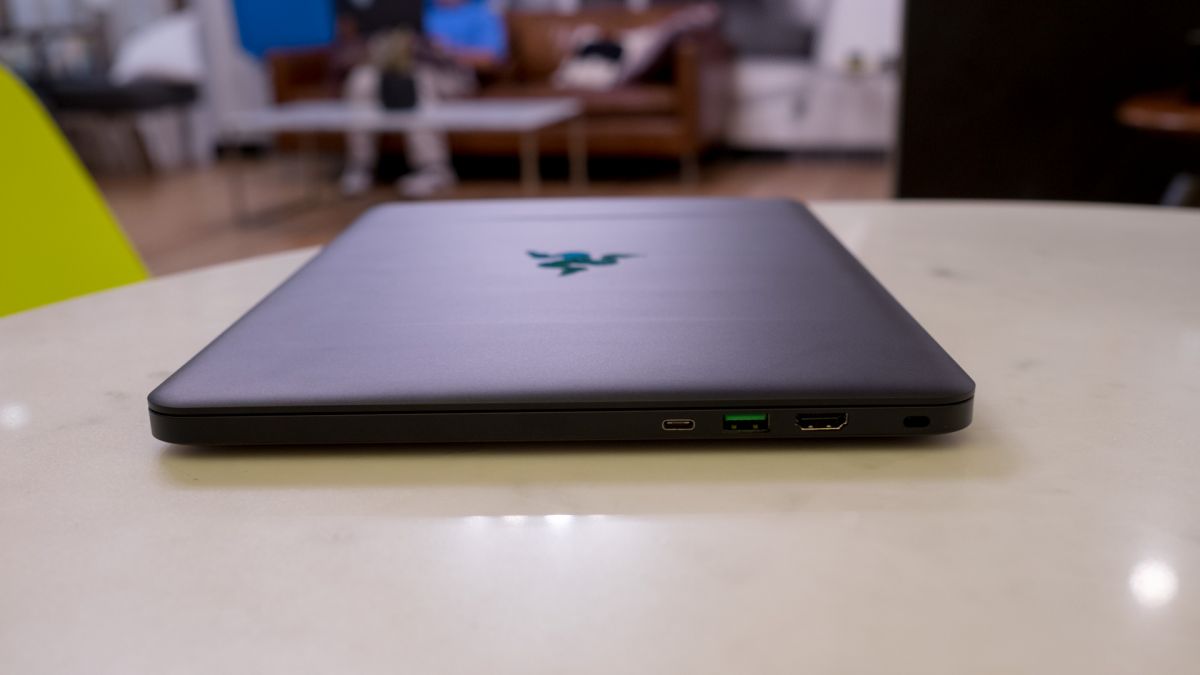
Not much, if anything, has changed about the Blade’s shell. It’s still built from a sheet of aircraft grade aluminum put through a CNC mill that’s anodized and coated in a slick black paint.
All of the logos and buttons are in their respective places and look or feel exactly the same. Inside, however, Razer must have upgraded the logic board, as it made room for a USB-C port in addition to the existing three USB 3.0 ports.
The device maker is also touting an improved thermal design with this Blade, allowing for the firm to pack in a Nvidia GTX 970M graphics chip with double the amount of VRAM. That said, this thermal upgrade also makes using the laptop on your, well, lap while under heavy load singe a little less.
Among the coolest keyboards yet
OK, so we may have omitted something when saying that not much has changed about the Blade externally. In bringing tech from its line of seriously slick desktop keyboards, the Blade now has the coolest keyboard of any gaming laptop – if not any laptop – period.
Razer has finally broke past Alienware and MSI’s laptops in introducing its Chroma lighting system for PC keyboards to the Blade. Loaded with the same software that owners of Chroma desktop owners use, the keyboard now sports all individually-lit keys that can display any of 16.8 million colors.

You can assign a unique color to each key on the board through this software, allowing you to highlight your most-used keys (i.e. WASD) or color code them for specific scenarios (e.g. in strategy and MMO games). You can save these assignments across profiles, and soon they’ll be playing directly into your games, should game developers adopt Razer’s kit available to them.
And, to think this is all said before the fact that, mechanically, this is by far the most improved version of Razer’s keyboard yet. While travel doesn’t feel any deeper than before, feedback feels as if it’s been improved for a punchier typing experience. (The glass-coated trackpad feels just fine, though we wish Razer would drop the separate mouse buttons already.)
Improving the keyboard was an indisputably smart move on Razer’s part, considering how essential it is to the whole product. With little else to stop it, let’s see how this Blade cuts the mustard. (So sorry.)
Specifications and performance
Always one to one-up itself, Razer made the choice in buying a Blade laptop not just cheaper than ever, but simpler than ever – if almost to a fault. When buying a Blade, you have two choices: 256GB or 512GB of SSD storage?
This being a gaming laptop, surely you know that this is one of those questions that has a right and wrong answer. Getting back to that question in a moment, let’s see else the asking price gets you.

Spec sheet
Here is the Razer Blade Stealth configuration sent to TechRadar for review:
- CPU: 2.6GHz Intel Core i7-6700HQ (quad-core, up to 3.5GHz with Turbo Boost)
- Graphics: Nvidia GeForce GTX 970M (6GB GDDR5 VRAM)
- RAM: 16GB DDR4 (dual-channel, 2,133MHz)
- Screen: 14-inch QHD+(3,200 x 1,800) IGZO (16:9, LED backlit, capacitive multi-touch)
- Storage: 512GB PCIe SSD
- Ports: 1 x USB-C Thunderbolt 3, 3 x USB 3.0, HDMI-out 1.4, 3.5mm headphone/microphone jack
- Connectivity: Killer Wireless AC 1535 (802.11ac, Bluetooth 4.1)
- Camera: 2MP built-in webcam
- Weight: 4.25 pounds (1.93kg)
- Size: 13.6 x 9.3 x 0.70 inches (W x D x H; 345 x 235 x 17.9mm)
A cool $2,199 or AU$3,299 (about £1,649) is the fee for that mini monster machine you see above. If it doesn’t look like much has changed since last year, that’s because it really hasn’t. The processor has been updated to the latest generation, you can finally get more than 3GB of video RAM on the GPU and a Thunderbolt USB-C port was added.
Again, there is a 256GB SSD option available for $1,999 or AU$2,999 (about £1,499). But, unless you’re one of the few fortunate enough to only plan to store a few games on this companion machine to your tricked out gaming rig, it’s irrelevant.
[Editor’s Note: As of this writing, the new Razer Blade is not yet available in the UK. We’ll update this story once we get word of its availability there.]
You’re going to want that 512GB sooner or later and, especially if you’re not willing to void any warranties by installing a larger SSD on your own, you won’t have many options.
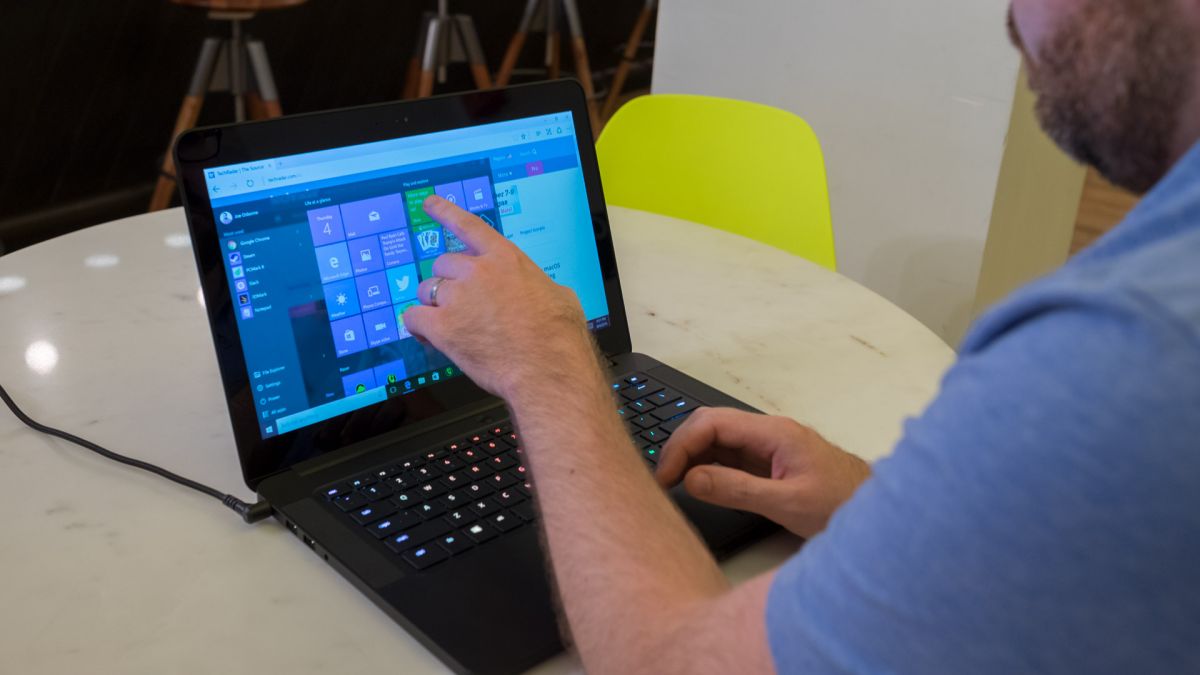
That the Alienware 15 offers a 256GB SSD-plus-1TB hard drive bundle (with largely the same components otherwise) for $50 less, as of this writing, should put the Blade’s modus operandi into context.
Likewise, you can currently get a nearly identically-specced Aorus X3 Plus v5 – save for the X3’s 1TB (!!!) SSD – for $300 less on NewEgg, as of this writing. The Aorus is one of the thin-and-light ones, too!
Knowing that deals like this are available make the Blade’s price in relation to its components no easier to stomach. But, again, you simply can’t deny the craftsmanship both inside and out that you’re paying for here. For someone that appreciates industrial design and the DIY spirit of PC gaming the same, it’s truly conflicting.
And, to think that this is a conundrum even after Razer took a $400-to-$500 axe to its Blade pricing this year since last. Razer has made great lengths to make the Blade more affordable, but apparently so did everyone else.
At any rate, how does the new Razer Blade perform with its improved thermals? Here’s how the Razer Blade held up under the scrutiny of our benchmark tests:
Benchmarks
- 3DMark Cloud Gate: 20,332 points; Sky Diver: 18,738 points; Fire Strike: 6,423 points
- Geekbench: 3,507 points (single-core); 13,061 points (multi-core)
- Cinebench CPU: 667 points; OpenGL Graphics: 96 fps
- PCMark 8 Home: 2,930 points
- PCMark 8 Battery Life: 3 hours and 35 minutes
- The Division (1080p, Ultra): 33 fps; (1080p, Low): 86 fps
- GTA V (1080p, Ultra): 22 fps; (1080p, Low): 128 fps
The Razer Blade is, unsurprisingly, among the strongest-performing gaming laptops you can buy today. That said, not much – if anything – has improved about its graphical powers from the previous generation. But, before you say “so much for VRAM,” remember that double the video memory should prove helpful for live streamers and creative professional-types.

A number of over 6,000 in Fire Strike all but guarantees reliable frame rates in most games at 1080p resolution with the settings tweaked to your preference. Clearly, you shouldn’t expect to be able to max out the settings in most games at FHD without running the risk of dropping below the coveted 60 frames per second. (This naturally makes gaming at the laptop’s native resolution a bit of a fool’s errand.)
Of course, many of you are likely saying to yourselves (again) that the same performance in laptops can be found for way less. Trust us, we know. But (again), remember that few, if any, of those options are built anything like the Blade.
Gaming aside, the new Blade will be able to handle pretty much every task that the average user would think to throw at it with aplomb. And, with its gorgeous, IGZO screen and Thunderbolt 3, creative professionals might find this laptop to be the MacBook Pro for the Windows die hard. But, there’s one other factor that makes this laptop awfully Mac-like.
Battery life
For an Ultrabook with a higher-than-HD resolution and dedicated graphics, the Blade actually offers decent longevity. A shocker, we know, though it’s testament to Intel and Nvidia’s hard work on the power management front and in part to Razer’s refined design in terms of thermals and space.

While its PCMark 8 Battery Life score is already an hour longer than its predecessor, we saw the machine last for nearly 6 hours – 5 hours and 54 minutes – in our local video loop test at 50% brightness. That’s a mighty long time for something with all the parts to qualify as a “gaming laptop.”
Razer pegs the Blade at 5 hours based on its own runs of the PCMark 8 Battery Test, which used the Windows Power Saver setting. We don’t use that setting in our tests, so imagine how far you could stretch this rig beyond 6 hours with that tool.
Granted, you won’t get these numbers while playing games or editing several streams of HD-or-better video. Regardless, the Blade looks like a slick companion for getting some work or play in with on those nationwide flights.
Verdict
While still out of reach from many, Razer’s vision for its leading laptop is finally taking shape. This year’s edition may largely be a revision on the existing design, but improvements like Thunderbolt 3 through USB-C and double the video memory could help the new Blade to achieve status in a wider subgroup of the well-to-do: creative professionals. The video editor that just so happens to be a PC gamer, it looks like Razer’s after you with this green machine.
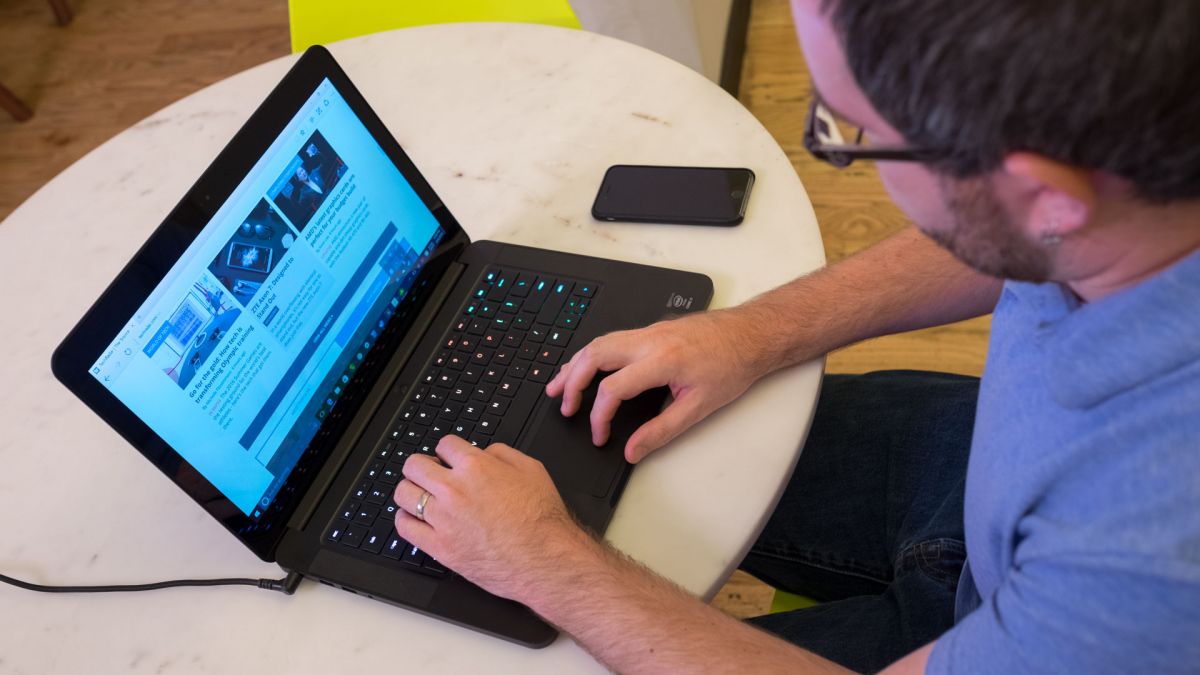
We liked
Razer has crammed more into its Blade laptop than ever while somehow making it the lightest it has ever been. More (and better) ports, more video memory, more battery life – yet, there’s a (albeit barely) smaller device containing it all.
The updated and improved Chroma keyboard lighting brings some more fun and personalization to the experience of using a Blade, but also tactical advantage and an overall more premium look and feel. Who knew that the arms race between Alienware and Razer would really be about keyboard lights?
We disliked
To be honest, the graphical improvements are incredibly minor here. While there isn’t much Razer could’ve done about it, given how dependent it is on chipmakers’ release schedules, that fact doesn’t make us any more enthused about the scant visual boosts on offer this year.
Plus, while we now recognize the appeal of a QHD+ screen (coupled with Thunderbolt, finally) for the visual arts folks, we still think pumping that effort into an FHD panel would go a long, long way for Razer in both price and longevity. (But, since it pulled the option this time around, Razer’s numbers must be telling it otherwise.)
Final verdict
We’ve always appreciated Razer’s Blade gaming laptops for their attention to build quality and design. It’s something that, at the time of their debut, was a bit lacking in the world of Windows notebooks. From the start, Razer has always been after a very specific type of gamer.
And, it’s only in this revision that we think we’re starting to see who that is. With the addition of Thunderbolt 3, doubling the video RAM and cranking up battery life: Razer has made its Blade a rather appealing option to people that both work (or study) in visual fields and happen to be PC gamers.
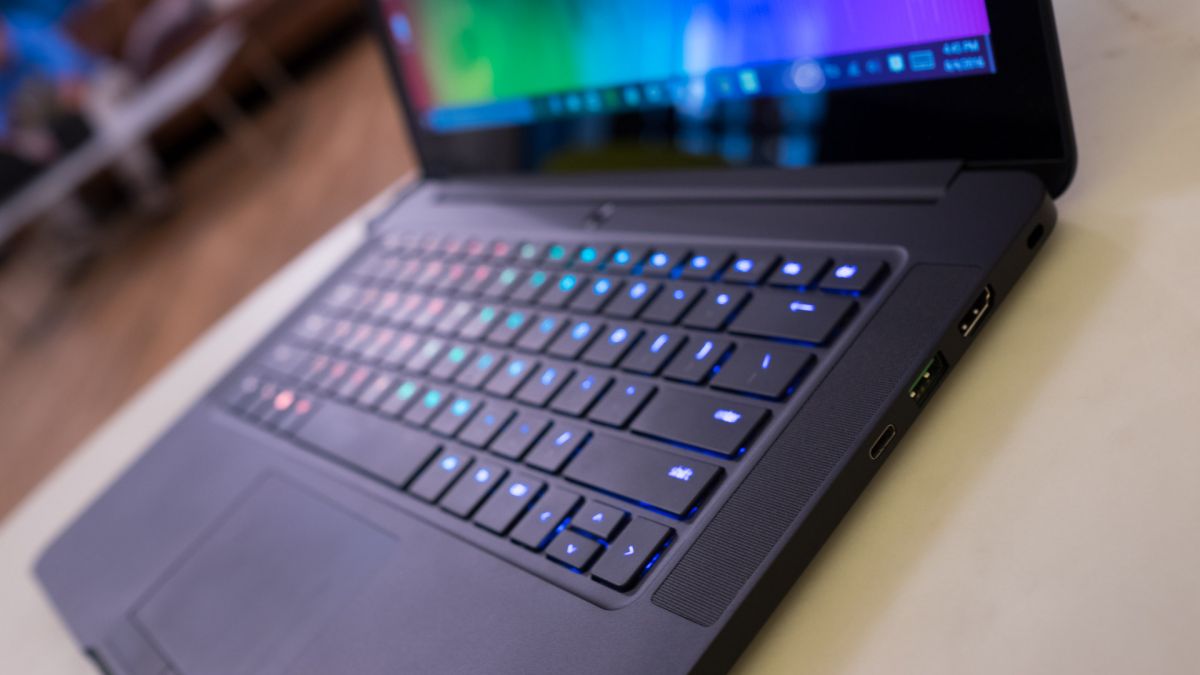
It’s still a niche nevertheless, but at least this one is easier to understand (or let pass without silent judgment from the DIY diehards) than simply “PC gamers.”
Being focused on value at TechRadar, Razer’s laptops have always been difficult to sum up. There’s no doubt about the Blade’s build quality and attention to detail, not to mention its graphical capabilities.
But, since that same level of performance can be found within laptops that are generally bulkier and uglier (albeit lacking in modern features by comparison) for hundreds less, Razer’s proposition puts the question of “what’s valuable to you?” front and center.
The new Razer Blade is the veritable MacBook Pro of the PC scene, and a better one at that, with all of the well-earned, esteemed accolades (and small derisions) that entails.
Source: techradar.com










































Any ideas on a UK or EU release date yet?